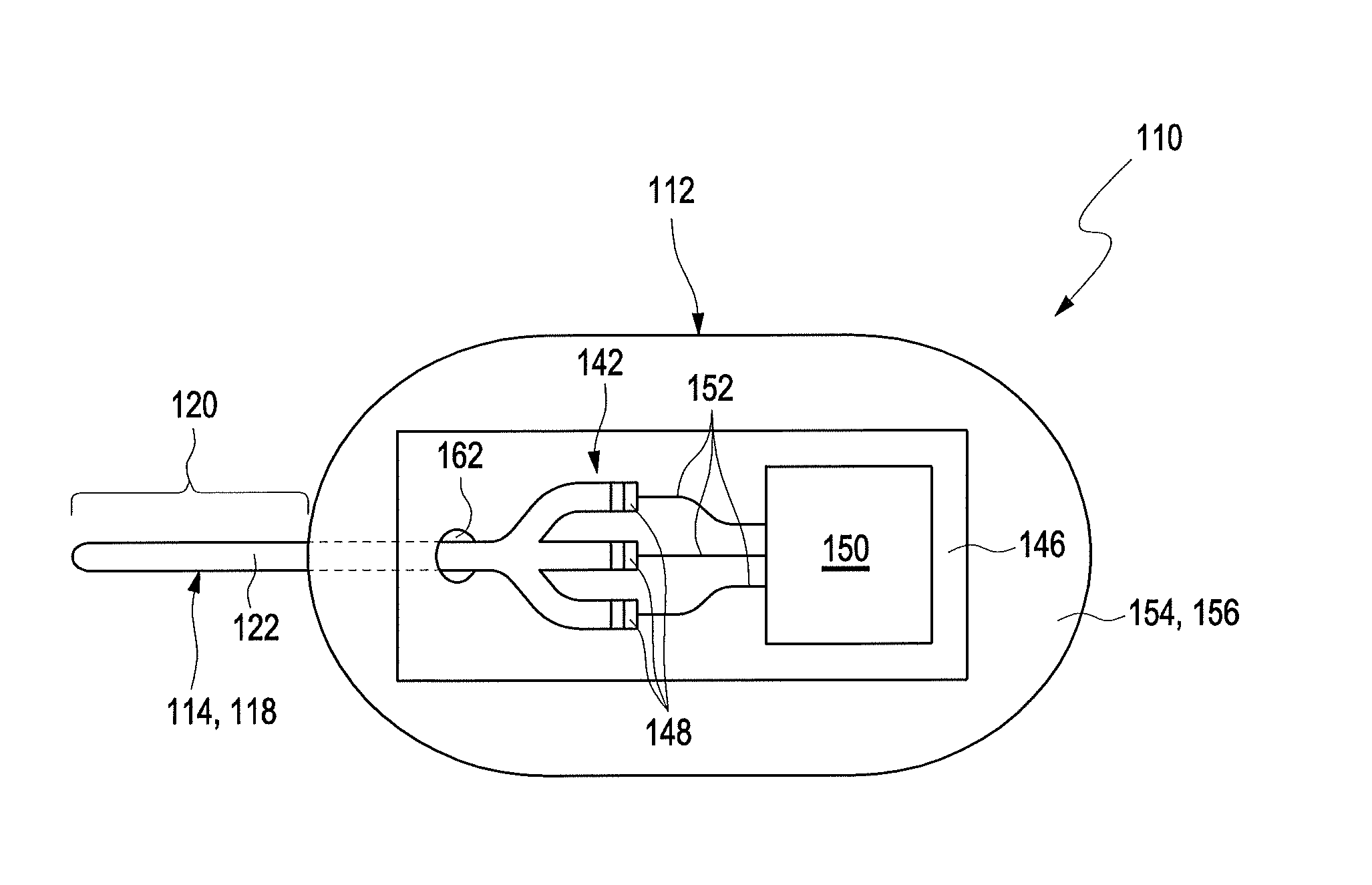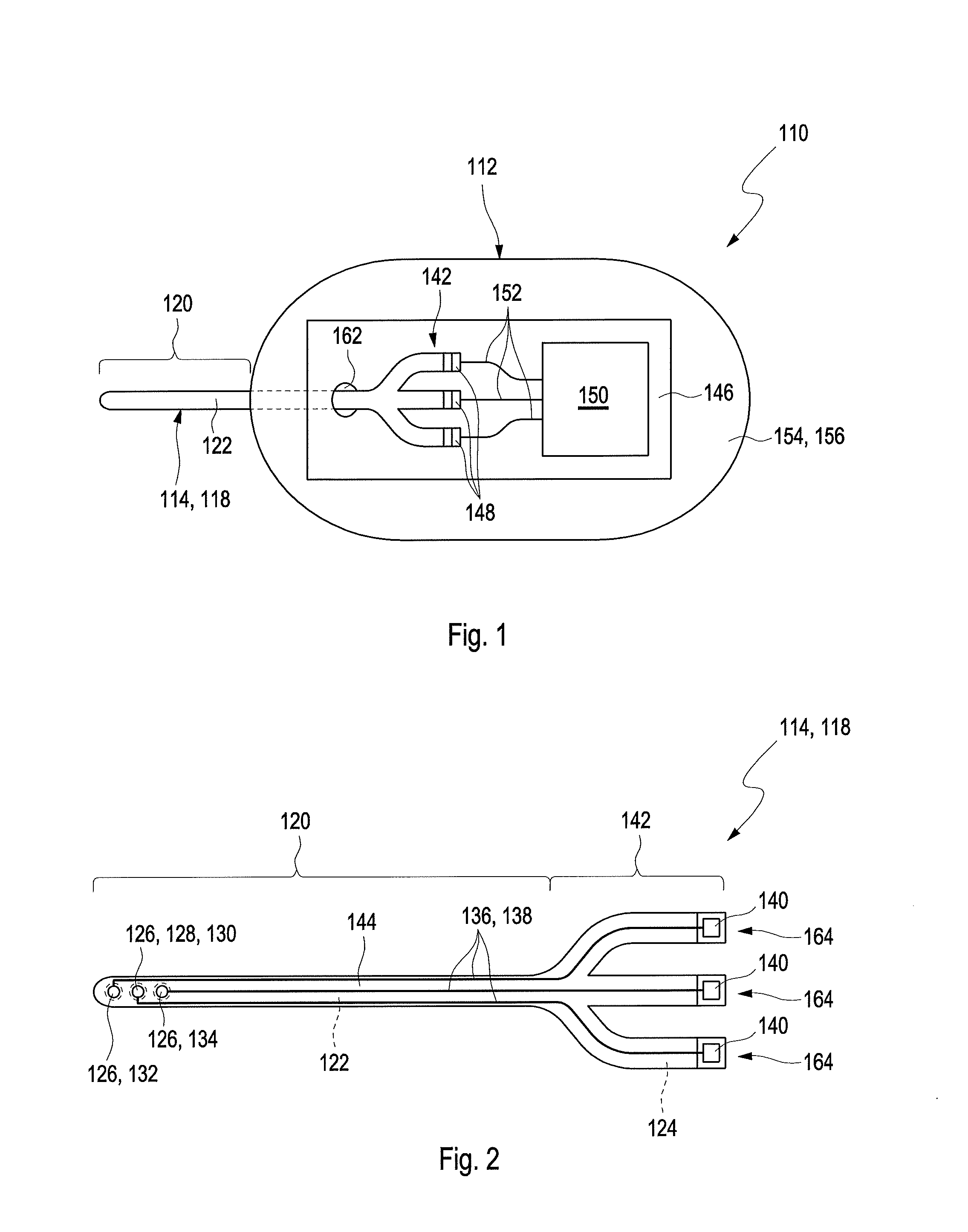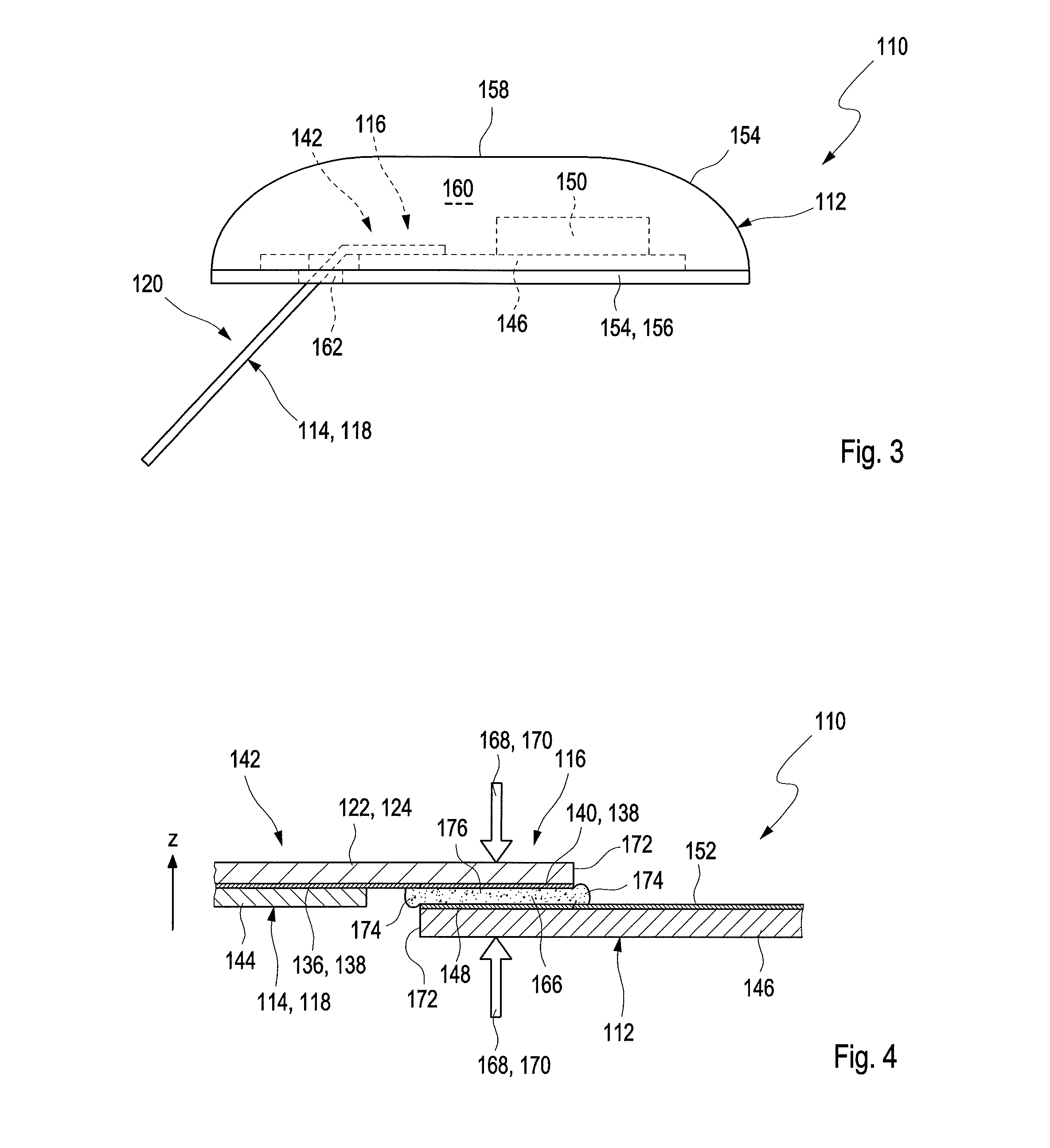Device for Monitoring at Least One Body Function of a User and Method for Manufacturing the Same
a technology a method, which is applied in the field of devices for monitoring at least one body function of a user and the method of manufacturing the same, can solve the problems of imposing a major technical challenge, affecting the quality of medical care, etc., and achieves the effects of simple contact process, high resistance to sterilization process, and easy application
- Summary
- Abstract
- Description
- Claims
- Application Information
AI Technical Summary
Benefits of technology
Problems solved by technology
Method used
Image
Examples
exemplary embodiment 1
Manufacturing of a Sensor Unit Having Conductive Paths Made of Gold
[0191]As a baseline for comparing devices having electrically conductive organic materials and devices having other types of electrically conductive materials, a dummy sensor unit 114 was manufactured by using conductive paths made of gold as an electrically conductive material instead of electrically conductive organic materials. As a connector substrate 124, a white PET foil having a thickness of 350 μm was used, obtained by Mitsubishi Polyester Film GmbH, Wiesbaden, Germany. Thereon, conductive paths 136 were deposited by using gold as a conductive metal, having a thickness of 100 nm. By using a laser ablation technique (ultraviolet laser) a part of the gold layer is removed, in order to pattern the conductive paths, the sensor electrodes 126 and the connector portions 140. Subsequently, by using a CO2 laser, single sensor units 114 are cut from the PET foil.
exemplary embodiment 2
Manufacturing of a Sensor Unit Having Conductive Paths Made of PEDOT:PSS
[0192]Further, a sensor unit 114 having conductive paths 136 made of an electrically conductive organic material, specifically an electrically conductive polymer, was manufactured, by using PEDOT:PSS as the electrically conductive organic material. For this purpose, on to a white PET foil having a thickness of 350 μm, provided by Mitsubishi Polyester Film GmbH, Wiesbaden, Germany, a dispersion of PEDOT:PSS (Clevios SV4, Heraeus, Leverkusen, Germany) was applied by a large-area coating using a doctor blading technique. Thereby, after drying at 100° C. for 60 minutes at ambient pressure, a dry layer thickness of PEDOT:PSS of 2 μm was generated. By using a CO2 laser, single conductive paths were patterned in the PEDOT:PSS layer, including corresponding connector portions and having conductive pads for sensor electrodes 126. The geometry of the pattern corresponded to the geometry of exemplary embodiment 1 above. By...
exemplary embodiment 3
Bonding the Sensor Unit According to Exemplary Embodiment 1 Above to a Printed Circuit Board
[0194]In this experiment, a connector part of the sensor unit 114 according to exemplary embodiment 1 above was glued to appropriate electric contact pads of a printed circuit board. For this purpose, a printed circuit board having a connector substrate made of FR4 was used. Thereon, electric contact pads made of gold by galvanic deposition were applied, having a mirror-symmetric symmetry to the connector portions of the sensor units. The connector portions were aligned to the electric contact pads, with 4 μl of Elecolit® 3061, obtained by Panacol-Elosol GmbH, Steinbach, Germany, applied in between the connector portions and the electric contact pads. An area of overlap was chosen to be approximately 5×3 mm2. A heated stamp having a temperature of approximately 170° C. was pressed on to the backside of the PET foil and pressed with a force of approximately 40 N for approximately 45 s. Therein...
PUM
| Property | Measurement | Unit |
|---|---|---|
| Pressure | aaaaa | aaaaa |
| Electrical conductivity | aaaaa | aaaaa |
| Concentration | aaaaa | aaaaa |
Abstract
Description
Claims
Application Information
 Login to View More
Login to View More - R&D
- Intellectual Property
- Life Sciences
- Materials
- Tech Scout
- Unparalleled Data Quality
- Higher Quality Content
- 60% Fewer Hallucinations
Browse by: Latest US Patents, China's latest patents, Technical Efficacy Thesaurus, Application Domain, Technology Topic, Popular Technical Reports.
© 2025 PatSnap. All rights reserved.Legal|Privacy policy|Modern Slavery Act Transparency Statement|Sitemap|About US| Contact US: help@patsnap.com



